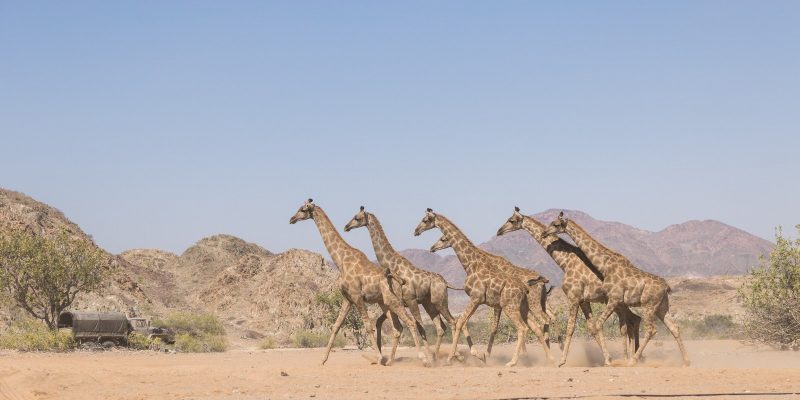At least 14 giraffes were reintroduced into Angola's Iona National Park a few days ago. This operation, carried out as part of a partnership between the authorities and several nature conservation organisations, has raised hopes for the restoration of biodiversity in Angola's oldest national park.
Giraffe footprints will now be visible on the arid soil of Angola’s Iona National Park. This is now possible thanks to the successful transfer of 14 giraffes from Angola. This subspecies of giraffe lives mainly in Namibia and Botswana. But their historic range is in Angola. Hence the feasibility study carried out prior to the transfer by the Giraffe Conservation Foundation (GCF) on various factors, including the original population, habitat suitability, human dimensions, risks during and after the operation, and financial feasibility.
https://twitter.com/Save_Giraffe/status/1677212166888333312
The large ruminants were transferred from a private farm in central Namibia to their historic range in Angola, a journey of 1,300 km in a truck specially designed for the operation. According to African Parks, which has been managing the park since 2020, this operation underlines the desire to restore the diversity of species historically present in Iona National Park.
Support from the Wyss Foundation
“The reintroduction of the giraffe to Iona marks a crucial moment in the park’s history. These graceful animals will contribute to the restoration of the park’s biodiversity and serve as a symbol of Angola’s commitment to conservation”, explains Pedro Monterroso, Director of Iona National Park. In addition to the GCF, the operation has been supported by the Wyss Foundation of Swiss philanthropist and businessman Hansjörg Wyss.
Read also- DRC: rhinos return to Garamba Park after a 17-year absence
The reintroduction of the Angolan giraffe to Iona National Park will play an important role in restoring the park’s ecosystem functions and ecological processes. Giraffes help to shape vegetation by browsing and dispersing seeds through their selective feeding habits. The operation is also helping to conserve the Angolan giraffe. This subspecies of giraffe can be distinguished from its congeners by its large brown spots, the edges of which are somewhat indented or have angular extensions.
The Angolan giraffe tends to search for food in the mountains during the cold and early dry seasons. It feeds mainly on Commiphora, a shrub that is widespread in savannah ecosystems and arid zones in eastern and southern Africa. In a study published in 2016, researchers estimated that there were 13,000 Angolan giraffes living in the wild.
Jean Marie Takouleu







